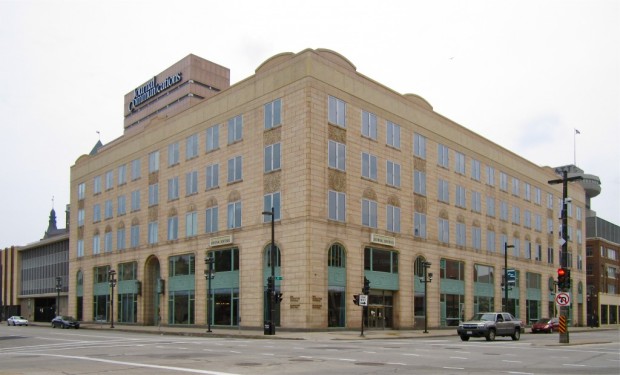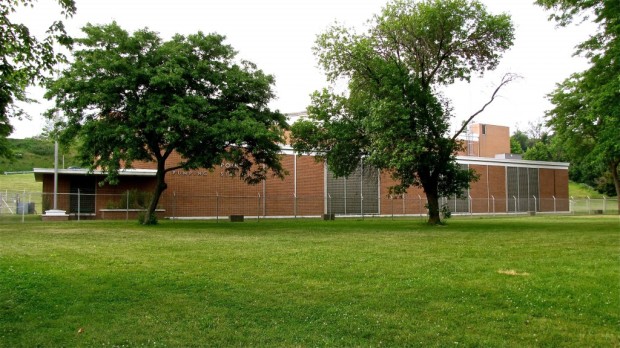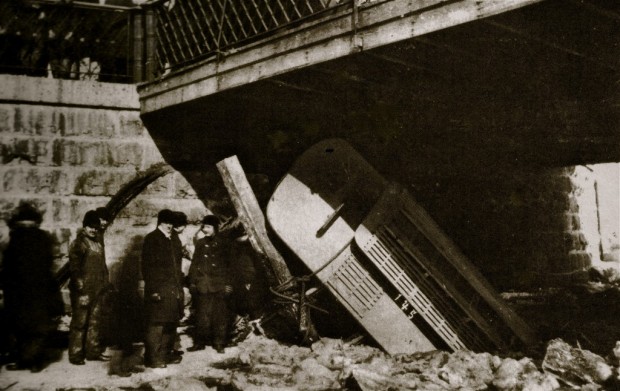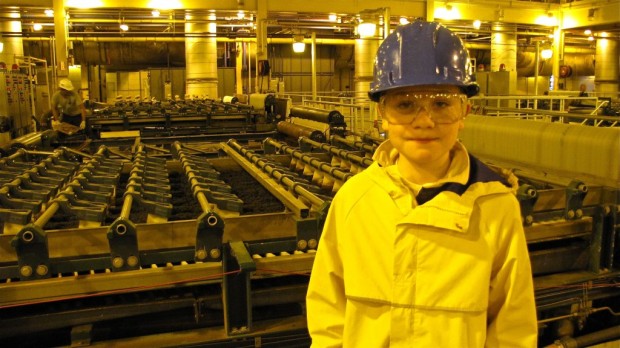We can still water our lawns after a nuclear war
The North Point pumping station was built in the early 1960s with roof and walls two-feet-thick to protect the city’s vital water pumps from a nuclear blast. Arthur Rynders, superintendent of waterworks at the time, felt this was a reasonable precaution because survivors of World War III would need water to fight fires and “to wash atomic contamination into the sewers.” Source: The Milwaukee Journal, Aug. 11, 1960

Tallest, but smallish, waterfall
The Lake Park waterfall is a little more than 30 feet in height, which is 137 feet shorter than Niagara Falls. Still, it’s the tallest waterfall in southeastern Wisconsin and it’s right in Lake Park. Source: Friends of Lake Park

A very businesslike church
Under terms of its original charter, Plymouth Church on Milwaukee’s East Side planned to operate a bank, an insurance company, and a steamship line. Church member, Milwaukee pioneer, and all-around business enthusiast Alanson Sweet was behind the unusually broad state charter for what was then the First Congregational Society of Milwaukee. Sweet had even begun putting up a warehouse to accommodate these activities when other members of the congregation stepped in and insisted activities be limited to building the church itself. Source: Milwaukee News, May 27, 1930

Ghost haunts newspaper
The massive counter in the first-floor lobby of the downtown Milwaukee Journal-Sentinel building once accommodated an army of clerks selling classified advertising and handling other walk-in business. On one especially hectic day, the story goes, a clerk collapsed and died in the middle of taking down information from an advertiser. His spirit has haunted the lobby ever since, forever trying to complete his final task. Source: Building security guard interviewed by John Swanson
Drowning on a streetcar
One morning, three Milwaukeeans drowned while riding a streetcar. It was 15 degrees below zero on the morning of Feb. 4, 1895, when a Russell Avenue streetcar sliding out of control on slick rails went through an open drawbridge and dropped into the ice-covered Kinnickinnic River. Motorman John W. Kennedy, age 42, and 10 of the 12 passengers aboard scrambled to safety. Kennedy immediately dived back into the frigid water in an attempt to rescue two passengers trapped in the submerged trolley. His body along with those of Antoinette Ehlman, 26, a schoolteacher, and Katie Schmidkunz, 33, an employee of the National Knitting Works, were later recovered from the wrecked car. – Source: Milwaukee Sentinel, Feb. 4, 1895
Proudly profiting from poo
The Milwaukee area generates 112 million gallons of raw sewage each day. For more than 70 years, the Jones Island water reclamation facility has treated this wastewater. The facility pioneered the now-common technique of mixing wastewater with microbes, which feed on what the sewerage district delicately calls ‘nutrients.’ The end result is clean water, released to Lake Michigan, and tons of dead microbes in the form of foul-smelling sludge. Most cities haul the sludge off to landfills. However, way back the early 1920s, an agronomist named O.J. Noer examined this muck – who knows why – and found it incredibly rich in nitrogen, phosphorous, and potassium, all of which are vital plant nutrients. Starting in 1926, Milwaukee has dried its spent microbes, and pelletized, packaged, and sold them as “Milorganite” – one of the oldest brand-name fertilizers on the market and also one of the world’s largest recycling success stories. In recent years, fertilizer production has topped 45,000 tons annually, bringing in more than $8 million. Source: Milwaukee Metropolitan Sewerage District
Interested in learning more about Milwaukee’s fascinating (and occasionally odd) history? Check out my book. (Paid link)




Ghost Haunts Newspaper: There have also been numerous sightings of at least one ghost at the Milwaukee Public Library.
LikeLike
Sorry, I meant Milwaukee Public Museum.
LikeLiked by 1 person
Kick! From atomic bomb-proof pumping stations to zombie poo — Milwaukee has it all!
Obscure Milwaukee fact? Well, I was born in Columbia Hospital on October 13th waaay back in the 20th century, if that helps. Well done on the trivia hype. Always a treat to come over here to your notebook and have a look-see. Three cheers and a tiger for Carl !!! LIN-Z
LikeLiked by 1 person
Here’s another bit of Cold War nostalgia: Between 1956 and 1971, the Milwaukee area was ringed by a series of 8 Nike missile bases, each consisting of a launch and a radar control site. The last time I checked, there were still a few visible remnants of the original network. The (sometimes remodeled) concrete block buildings include the Kelly Senior Center on South Lake Drive, the former Summerfest offices on North Harbor Drive and a small Lake Park maintenance shed near the Wolcott statue. A hike through Havenwoods State Forest also reveals the occasional foundation remnant.
LikeLiked by 1 person
Love reading about the history of Milwaukee…I was born and raised in Milwaukee but now live near Pittsburgh, Pa. Recently I have been researching my family’s ancestry and found that very few of our clan left Milwaukee…they were all Germans who came from Germany in 1870s and settled in Milwaukee. They mostly lived in the area near 7th street and Clark and Meinicke which was taken over by the expressway. Union cemetery is where a lot of my relatives are buried. Anyway, love reading about the things in Milwaukee’s past!
LikeLike